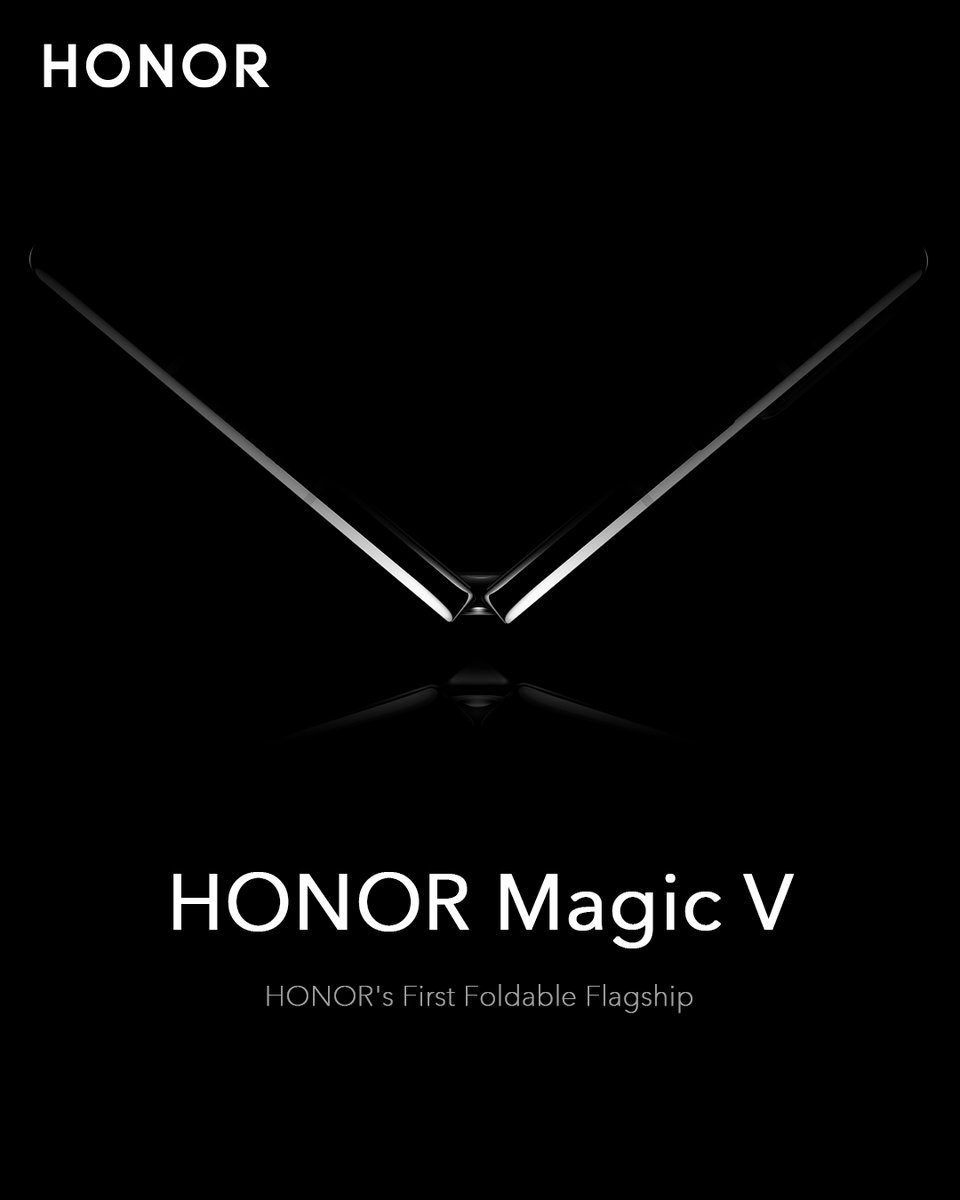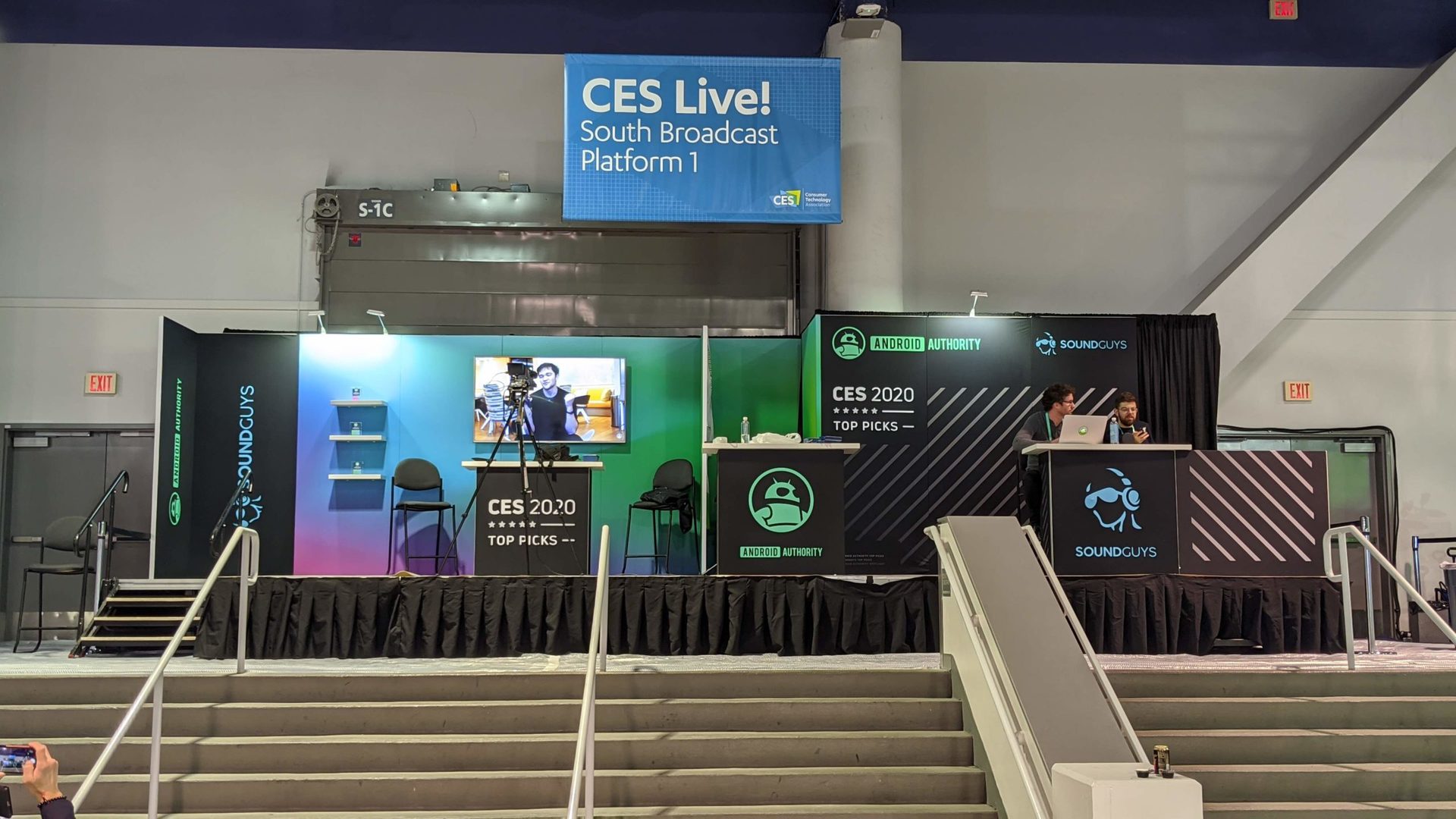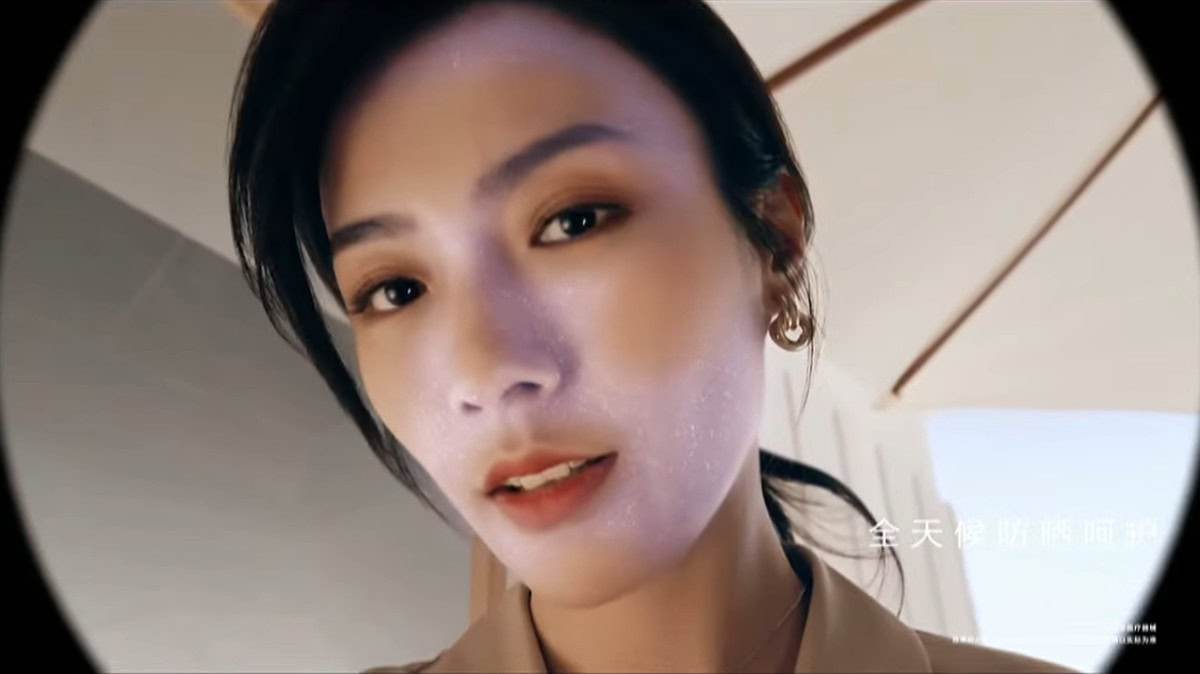Affiliate links on Android Authority may earn us a commission. Learn more.
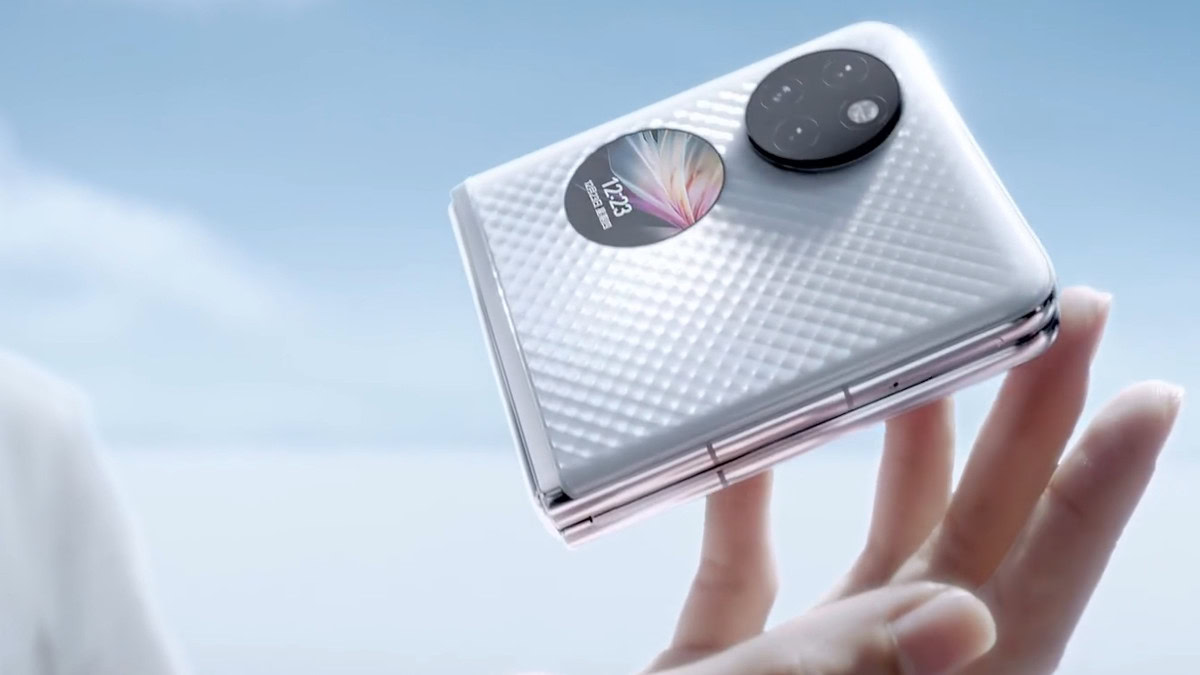
This morning, Huawei fully unveiled the Huawei P50 Pocket, a clamshell foldable priced as a $1,410 rival to the Galaxy Z Flip 3 available in China (only) and on sale now.
What’s new:
- We already saw the design, which features the double circular elements on the front cover, featuring the round 1.04-inch display, and a triple camera.
- Once opened up, the P50 Pocket rocks a 6.9-inch 120Hz OLED main display, and is powered by Qualcomm’s Snapdragon 888 4G chipset, so no 5G to meet US regulations.
- There’s also a 4,000mAh battery, beating the Flip 3’s 3,300mAh capacity, and it’s slightly thinner than the Flip 3 at the hinge point, and uniform thickness, rather than tapered:
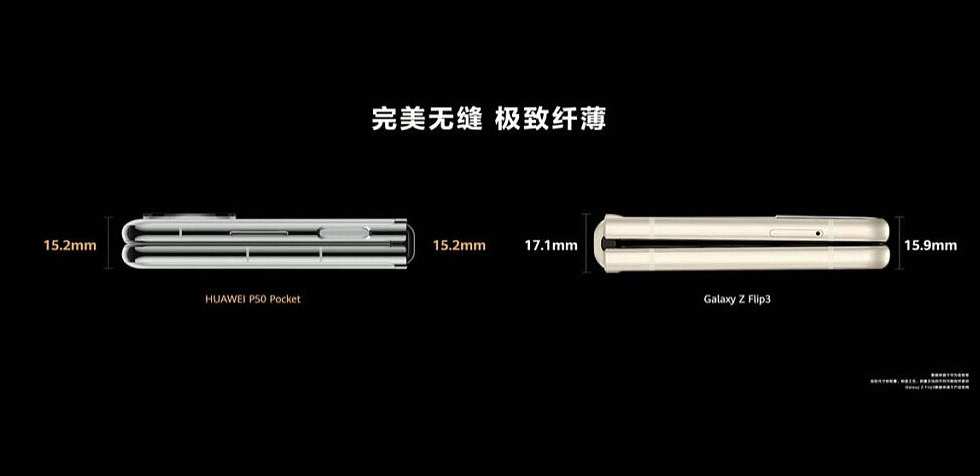
- And the price tag: 8,988 yuan, or about $1,410 in China, or 10,988 yuan (~$1,725), with 12GB of RAM and 512GB of storage for the premium gold edition.
- The Galaxy Z Flip 3’s $999 price looks like a bargain in comparison.
What else:
- Huawei’s also popped in a pretty weird, possibly useful, fluorescent photography mode via a 32MP super-spectrum sensor used in the triple rear camera, and first found on the P30 and P30 Pro.
- That lets you do things like check if you’ve removed makeup or if you’ve applied sunscreen correctly, which could actually be useful, but probably needs to be tried out before further comment.
But does this device matter?
- Richard Yu, CEO of Huawei’s consumer business group, pushed the feminine angle during the announcement saying: “It’s very delicate … We want to bring elegance to you, on the go.”
- And that’s great and all but you can’t really buy it.
- Huawei has yet to talk about markets other than China, and of course, the lack of Google compatibility is a non-starter for many, though Huawei’s AppGallery is always mentioned by Huawei as being better than ever.
- It’s good to see, but it’s not going to make much of a ripple beyond enthusiast interet, though uptake in China will be interesting.
⌚ Vivo Watch 2 launches with week-long battery life, eSIM smarts (Android Authority).
👉 Flexible OLED isn’t just for foldables, boasts LG Display’s CES concepts: a cool bike setup, and a weird “Media Chair” that offers a 55-inch, curved OLED screen in your face as you sit (Android Authority).
💬 Google could bring per-app language settings to Android 13 (Android Authority).
🔕 Pixel 6 and 6 Pro owners won’t be able to use Hold for Me or Call Screening for a while (Android Authority).
🍎 iPhone 14 Pro and Pro Max hole-punch displays to be dual-supplied by LG and Samsung (MacRumors).
📺 Samsung’s 2022 TVs and monitors will support its new HDR10+ Gaming standard (Engadget).
🆕 “The most innovative tech gear of 2021, according to me” (CNET).
📶 Cellular for home? Maybe not: “T-Mobile’s 5G home internet: I tried it, and it tried me” (The Verge).
🤔 Face recognition is being banned—but it’s still everywhere: On phones and increasingly in airports and in banks (Wired).
💰 “Two Chinese streamers sold 18 billion RMB (about $3B) worth of goods in a half-day livestream yesterday. That’s almost as much as Twitter’s annual revenue ($3.72B).” (Twitter)
🧨 Watch a Finn blow up his Tesla Model S with dynamite (Jalopnik).
💧 “ELI5: How do they calculate volumes of lakes and oceans when the depth is inconsistent and the shape is irregular?” (r/explainlikeimfive)
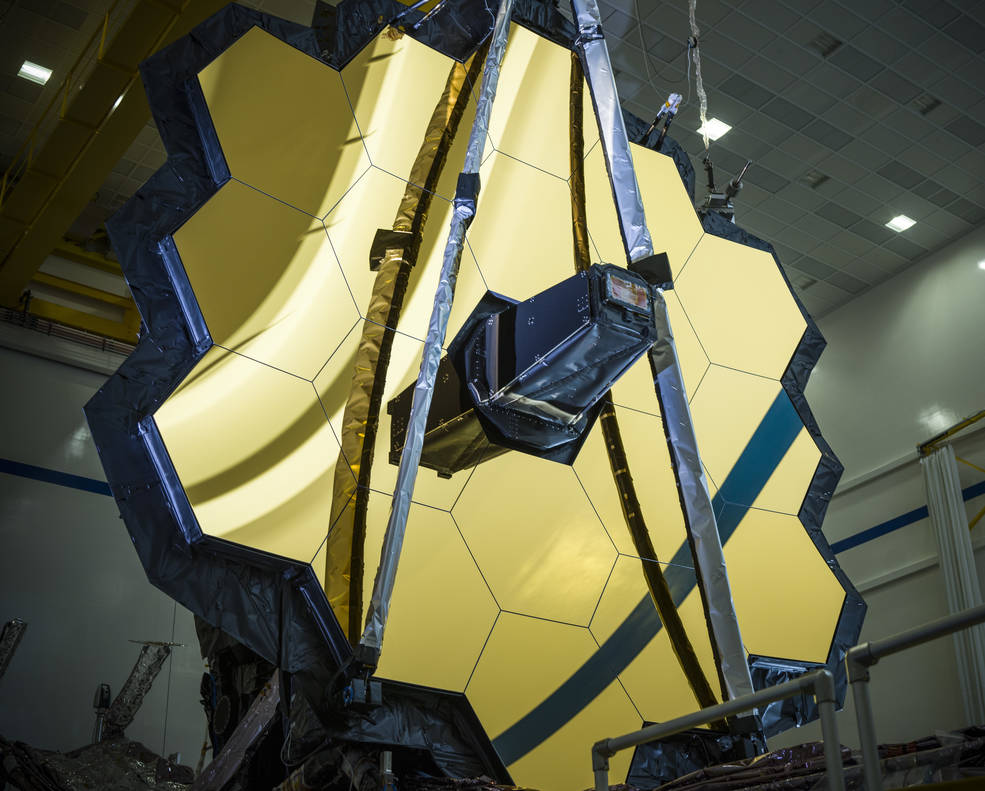
Remember when we only had the Hubble Telescope up there in space? Well, finally, a giant new telescope is heading into orbit:
- The James Webb Space Telescope (JWST), will launch from French Guiana, on the back of an Ariane 5 rocket, the successor to the Hubble Telescope, launched back in 1990.
Anyway, it cost $10B, and it’s making scientists and astronomers the world over very excited. Here’s one in Australia saying very excited things — Professor Lisa Kewley, Director, ARC Centre of Excellence for All-Sky Astrophysics in 3D, Australian National University:
- “The James Webb Space Telescope is by far the largest infrared telescope ever put into space. With its exquisite sensitivity, the James Webb will unveil mysteries of the universe that have previously been hidden to us. Through deep observations, James Webb will reveal the very first galaxies formed in the infant universe and how those galaxies evolved across 13 billion years of cosmic time. We will obtain an unprecedented picture of how galaxies like our Milky Way formed and evolved. We will measure how the elements responsible for life: oxygen, carbon, and nitrogen, formed and evolved across 13 billion years of cosmic time.
- “James Webb will also reveal what elements are in the atmospheres around extrasolar planets. The big questions that James Webb aims to answer are all about our origins and our place in the universe: Are we unique? Is our Earth unique? Is the Milky Way unique? What are our origins?”
Those all seem like good questions to answer!
- Current launch time is December 25th, 7:20AM ET, and you can stream it here.
- I mean, it’s pretty early for a holiday, but with kids and relatives and dogs and reindeer, you’ll be up early to see what’s under the tree anyway, right?
All the best, and catch you in a week and a bit!
Tristan Rayner, Senior Editor.
